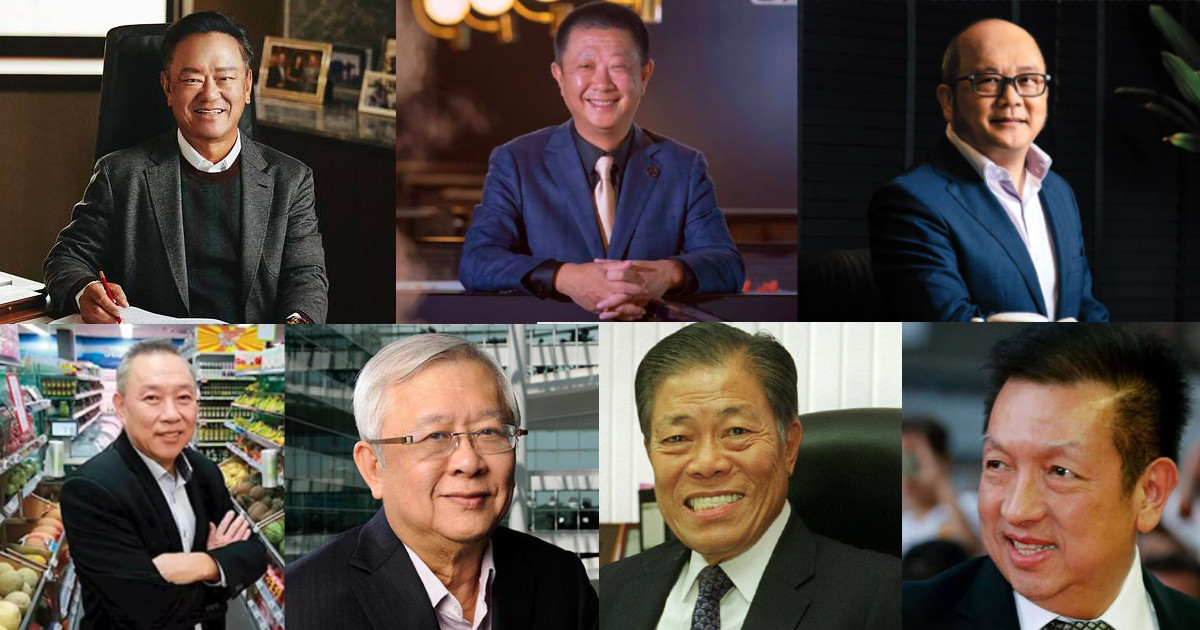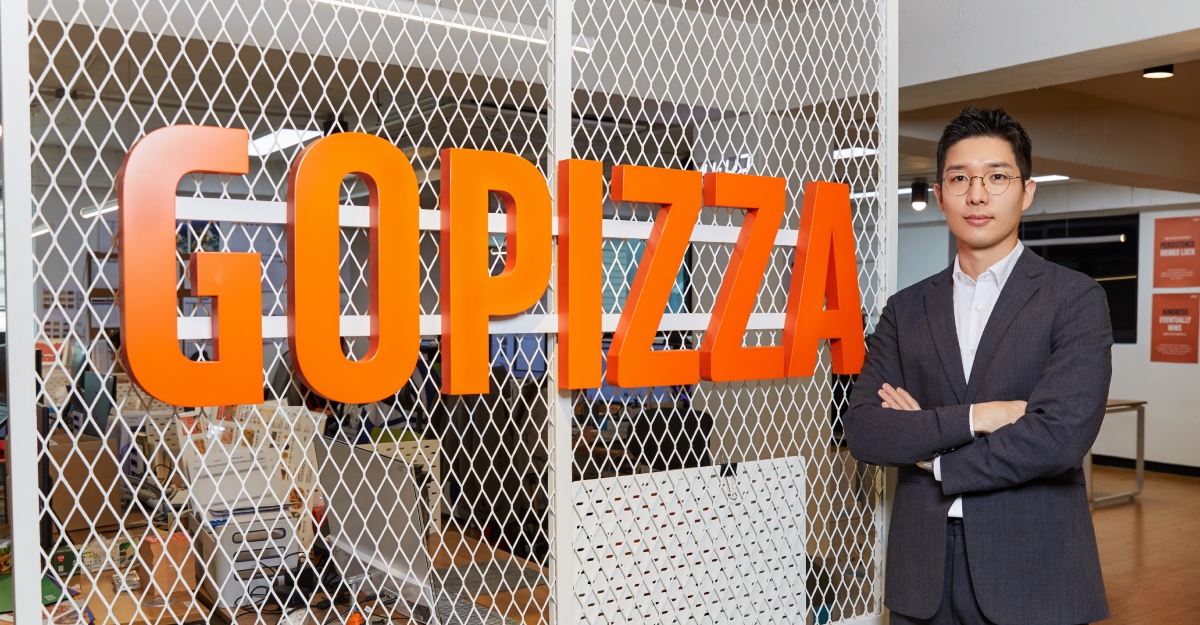While Singapore has its fair share of ultra-rich family dynasties and heirs to billion-dollar fortunes, rags-to-riches stories are far and few between.
It’s not easy to compete with the big boys, especially if you come from next to nothing yourself.
However, several enterprising Singaporeans have been steadily climbing the ranks of the ultra-wealthy over the past couple of decades despite their humble backgrounds.
Born into impoverished households, these entrepreneurs built up fortunes with meagre resources, relying on their skills, wits, and luck for survival.
Here are seven tycoons with outstanding rags-to-riches stories, who have now made their way to be among Singapore’s top 50 richest:
Zhang Yong and Shu Ping, Haidilao

Zhang Yong was born in 1969 in Jianyang, a rural province in Sichuan, China. The high school dropout used to work as a welder in a government-run tractor factory and only visited his first restaurant when he was 19.
However, the experience was disappointing as he was served lacklustre customer service and unimpressive food.
After being denied a company apartment for himself and his then-fiancé Shu Ping (now wife), Zhang Yong decided to launch his own restaurant with an aim to provide customers with an unforgettable dining experience.
He first launched a four-table restaurant called Haidilao in 1994, providing customers with free services like manicures and snack platters.
It soon grew to be the largest hotpot restaurant in town and began expanding rapidly. By 2013, Haidilao opened its first overseas branch in Los Angeles.
Today, Haidilao generates US$3.8 billion in sales across its 768 restaurants worldwide. Zhang Yong and his wife has also been dubbed as Singapore’s richest this year, with a combined net worth of US$19 billion.
Goh Cheng Liang, Wuthelam Holdings

Goh Cheng Liang was born into a family of seven that lived in a S$3 per month rented room in a River Valley Road shophouse.
His father was jobless and his mother washed laundry. When World War Two broke out, Goh was sent to Malaya to help his brother-in-law sell fishing nets.
When he returned to Singapore, Goh sold aerated water, a business which failed and burned through his meagre capital. In 1945, he became a salesman at Tan Chong Huat Hardware.
His big break only came in 1949, when he purchased several barrels of rotten paint from the British army’s auction and experimented with it.
He later launched a paint manufacturing business named Pigeon Paint, which flourished when restrictions on imports were imposed following the Korean War.
In 1950, Goh set up his first paint shop in Singapore and acquired the main distribution rights for Nippon Paint. He also founded the Nipsea Group in 1962 in partnership with the Japanese paint giant and Wuthelam Holdings, a closely held paints and coatings maker.
Today, Goh has a net worth of US$18.7 billion and ranks as Singapore’s third-richest man. Despite an exhaustive list of accomplishments, the billionaire continues to expand his empire to this day.
In 2019, Nippon Paint embarked on an international acquisitions campaign, buying out DuluxGroup, Australia’s largest paint manufacturer, for US$2.7 billion; and Turkey’s Betek Boya for US$247 million.
Earlier this year, Goh also secured a majority stake in the Japanese giant for S$16.7 billion.
Choo Chong Ngen, Hotel 81

Born in 1952, Choo Chong Ngen was a kampong boy from Hougang. He is one of seven children, who was born to a carpenter and a housewife.
When he was 10, Choo began selling ice cream to earn his own pocket money, and later dropped out of school to become a fishmonger at age 14.
The following year, he was paid only S$30 a month working at a textile business for his neighbour. Unsatisfied, the enterprising youth borrowed S$6 and invested S$50 his mother had given him into his own textile business.
By 21, he had made his first foray into the real estate industry, buying a shophouse unit on a 10-year bank loan and renting it out for up to S$2,000 a month.
He reinvested his earnings and bought over 30 shop units by the time he was 30, each asset generating a consistent monthly rent. Then, inspired by a stay in a cheap Tokyo hotel in 1991, Choo decided to set up his own chain of budget hotels.
The entrepreneur bought land in Geylang for S$1.5 million, building over 100 units spread across four plots in the district. This chain of budget hotels became the red light district’s infamous Hotel 81, incorporated under Choo’s Worldwide Hotels group in 2018.
Worldwide Hotels has expanded into the budget and mid-tier range of hotels since its inception, owning 38 hotels in Singapore with properties across the Asia Pacific and plans to expand worldwide.
Today, the tycoon presides over a US$2.5 billion net worth as Singapore’s 14th richest man.
Peter Lim, Diversified Assets

Born to a fishmonger and housewife in 1953, Peter Lim and his six siblings grew up in a two-bedroom government flat at Bukit Ho Swee.
Lim excelled academically, completing his secondary school education at Raffles Institution and studying at the University of Western Australia in Perth.
Coming from humble origins, Lim struggled to put himself through university, working odd jobs as a taxi driver, cook and waiter. He eventually graduated with a degree in accounting and finance and started his first job as an accountant
Lim got his big break with a streak of wildly successful ventures into the stock market, accruing the moniker of the “Remisier King”.
In the early 1990s, Lim invested US$10 million in the then-start up palm-oil company Wilmar. He cashed out at the peak of commodity prices in 2010, selling his Wilmar shares for a whopping US$1.5 billion.
Today, the tycoon sits on a net worth of US$1.95 billion as Singapore’s 17th richest man, with diversified assets into property, healthcare and sports.
Lim’s empire includes the assets like Singapore’s Thomson Medical Group and Manchester’s historic Northern Stock Exchange.
Ron Sim, OSIM

Born in 1958, Ron Sim spent his childhood taking up menial jobs to support his family of nine, including selling wanton noodles and working as a waiter.
Sim graduated with only an O-level certificate and started working right after completing his national service. His first company was launched in 1979 with four partners, but quickly closed down.
In 1980, he launched another business alone, which specialised in trading household goods but the business also shut down due to a recession in 1985.
In spite of the setback, Sim launched yet another company in 1985, specialising in the health and wellness sector. The new firm was wildly successful for its range of Japanese shiatsu-style luxury massage chairs.
Incorporated as OSIM, the brand began expanding aggressively, trailing a path across Hong Kong, Taiwan, Malaysia and Mainland China by 1993.
OSIM is now one of the top massage chair brands worldwide and has over 413 outlets located across 88 cities. Today, Sim sits on a US$1.3 billion fortune as Singapore’s 28th richest man.
Lim Hock Chee, Sheng Siong

Famous for his thriftiness, Lim Hock Chee was born in 1961 as the fifth of nine children. His father first worked as a fisherman, then a pig farmer with over 3,000 pigs on a 20,000 square foot farm at the height of the business.
Lim dropped out of Chinese High School in Secondary 3 and completed his education in a two-year car mechanics course at Jurong Vocational Institute, the present-day ITE College West in 1976.
In 1985, the by-then successful Cheng Siong Pig Farm suffered when the government shut down the pig farming sector. Lim opened up a counter at a Savewell provision shop in Ang Mo Kio to sell his family’s excess stock of chilled meat.
The entrepreneur and his brothers later bought over the outlet for S$30,000 with capital borrowed from his father in 1985. Renamed Sheng Siong, the store flourished with their no-frills approach to the supermarket business, offering customers products at rock-bottom prices.
Today, Lim is Singapore’s 31st richest man, with a net worth of US$1.2 billion. Sheng Siong has grown into Singapore’s third-largest supermarket chain by sales with over 60 stores located islandwide.
The franchise has been listed on the Singapore Exchange since 2011 and attained over S$890 million in annual sales revenue in 2018. In 2020, the combined net worth of the Lims rose 38 per cent as the shares of Sheng Siong soared amidst the pandemic.
Lim Chap Huat, Soilbuild Group

Born in 1954, Lim Chap Huat was born the third of seven children of a trishaw rider and washerwoman. He spent the first four years of life in a wooden shack at the compound of an old colonial bungalow, before the family moved to a one-room rental flat.
When he was still a child, Lim started working to help support the family. He sold tickets at the National Stadium, cleared debris at construction sites for S$6 a day, and gave tuition for seven years.
Determined to build his own wealth, Lim took S$5,000 from his savings to set up a construction company, Soilbuild, after National Service.
Soilbuild flourished during the property boom in the 1980s and jumped into property development in 1981. Unlike other businesses that went bust, the firm rode the wave of the 1987 financial crisis to buy plots of land in Jalan Haji Alias.
The Soilbuild Group is now one of Singapore’s most prolific property developers and a listed REIT. Notable properties under Soilbuild’s extensive portfolio include business spaces and residential properties like The Mezzo and Mandai Connection.
Today, Lim sits on a net worth of US$890 million as Singapore’s 39th richest multi-millionaire.
Can Anybody Be A Billionaire?
Far from being born with a silver spoon, these tycoons accrued their wealth through sheer hard work and perseverance.
It’s definitely no mean feat to grow an empire that can span several countries and employs hundreds, if not thousands of workers.
The amount of dedication required to amass a fortune is proportional to its weight in gold. While the dream of topping Singapore’s richest list is within the grasp of almost anyone, the question is — are you willing to work for it?
Featured Image Credit: Asia Tatler / Discover SG / Prestige Hong Kong / Forbes / Vulcan Post








